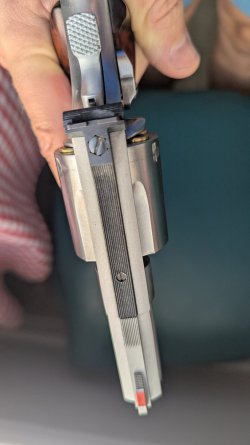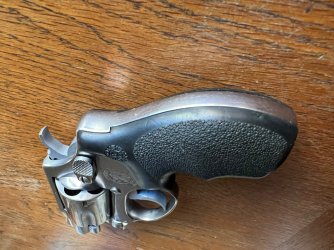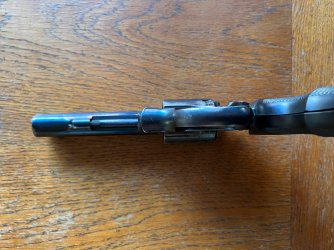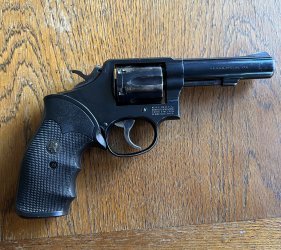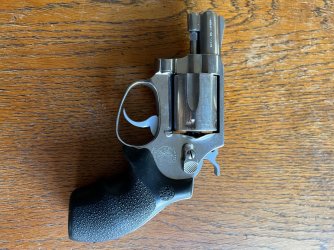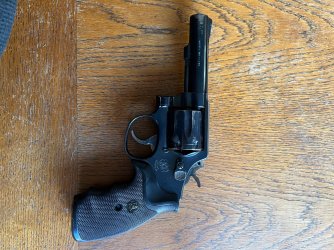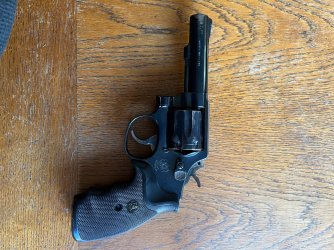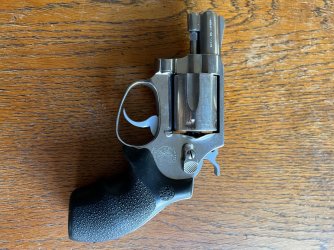SWOH
Member
Wow! Very appreciative of all the recommendations and reasoning. A whole lot to digest and consider. It does appear the majority are recommending the SW 686. Not sure of the stainless though, how is it in the sunlight? Maybe the blued 586. Looking forward to next range trip and renting a few models that have been recommended. In the meantime, here is another question. DA/SA or DA only? Which would be best to start with? The wrangler I have in 22 is SA only. Fun plinker, so glad I saw Hickok 45's video/demonstration on cylinder gap blast avoidance. " Thank You" to all. Joe
It's a lot less demanding finish for your care and attention and while more shiny, it's not like blued guns can't reflect light. Some 600 - 800 grit wet/dry sandpaper can take out scratches (if you're aware of the grain pattern of the original finish).

